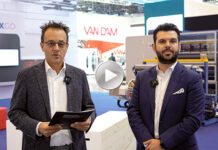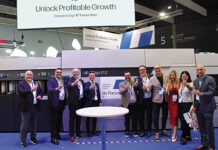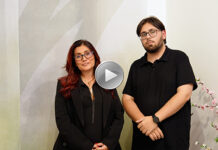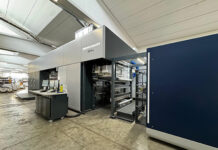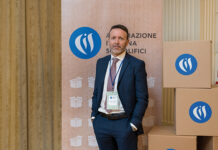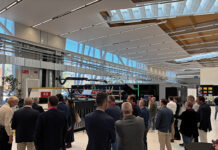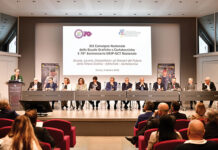By Dieter Finna
The total cost of label production is determined by three key factors: quality, cost, and productivity. These must not be considered in isolation from each other, which nevertheless occurs due to the complexity in practice. While clear ideas exist regarding the achievable quality and costs of a label printing machine prior to any investment decision, productivity in consideration of the process variability often receives too little attention when making a purchase decision. How big the influence of this criterion on the total operating costs is, is shown in the following example.
In investment planning, the market segments in which the machine is to be used are at the beginning of a detailed analysis. The analysis in this example shows that the market and customer structure essentially consists of customers in the segments of cosmetics, wine & spirits, medicines (over-the-counter) as well as orders in security printing, e.g. tax stamps for tobacco. This results in the potential market segments for which the machine is configured. We are looking for a machine system that meets the specific requirements of these market segments. It should also be noted that all mentioned market segments are characterized by small to medium run lengths as well as high run lengths, i.e. a large number of jobs with many different printing processes and substrates.
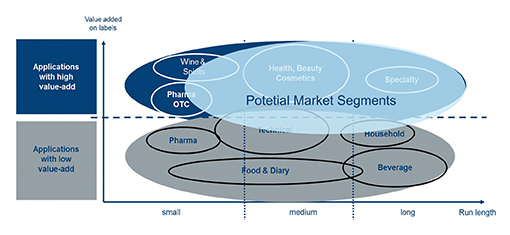
Modular design and configurability
In order to meet the wide range of requirements identified, a freely configurable and expandable machine system with a high degree of automation is required. In the market, such machine systems are offered by various manufacturers. To illustrate this, two of the most commonly used machine types are used as references in the market.
The machine of manufacturer A has a max. print width of 430 mm (17 “) with a specified machine speed of max. 160 m/min., the machine of the manufacturer B has a max. printing width of 410 mm (16 “) and a max. machine speed of 170 m/min.
Both machines can be configured individually or in combination with all printing units, such as offset, flexo and rotary screen printing, hot foil stamping and cold foil printing, for the requirements of the aforementioned market segments. They are each equipped with a web tension control, which is also suitable for tube laminates up to 450μm in the cosmetics sector. Both machines can be additionally configured with gravure printing units and meet the requirements for print quality and user-friendliness in a comparison test. They have a high degree of automation for dynamic feed adjustment, presetting of length and cross register and for repeat jobs, machine settings can be recalled from the main memory in addition to also having automatic washing units.
In a nutshell, from a technical point of view, there is comparable machine equipment, but the machines differ in terms of acquisition costs. The price of machine B is approximately 20% lower than the price of machine A, which would consequently influence a purchase decision, taking into account the criteria listed, clearly in favour of machine B.
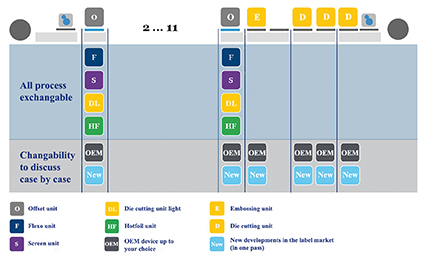
Process change times have a significant impact on the profitability of a machine system. What influence does the process variability have?
Market segments such as cosmetics and wine labels require a high number of process changes per shift in label printing. For wine labels, 4 process changes per shift are the rule, sometimes even as many as 7 process changes. For this reason, the changeover times for a process change are very much at the forefront of a profitability analysis. With machine A, for example, process changes can take place while the machine is running, that is, printing units that are not required for the current job can already be prepared for the follow-up job.
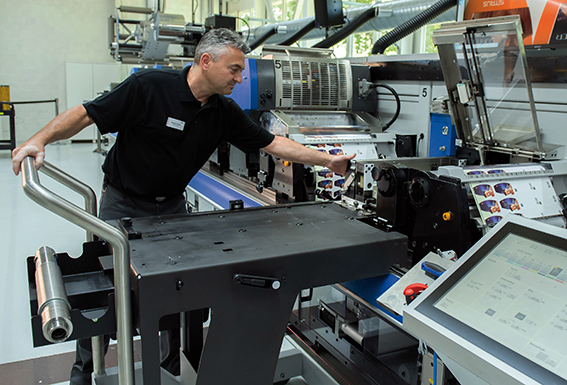
If, as in the given order structure, many process changes are required, i.e. printing units of different printing processes are interchanged, the sum of the process change times has a significant influence on the economic efficiency of a machine system in narrow web printing. With regard to the process change times themselves – which is often underestimated in an investment decision – the two reference machines differ significantly. The changeover time for a process change is 5 minutes for machine A, without separating the web and with fully automatic setup using a changeover trolley, while it is 30 minutes for machine B. With a corresponding number of process changes, this difference clearly affects the cost-effectiveness of a machine system.
Economic efficiency
Using a TCO calculator (Total Cost of Ownership calculator), which the machine manufacturer applies for cost comparison, it can be determined, which machine system with its specific acquisition costs in the determined order structure and the assumed average number of 4 process changes per shift has the highest efficiency. This shows that even a higher purchase price of a machine pays for itself in a relatively short time if the process change time of the machine system is shorter. If, for example, the purchase price of the machines differs by 400,000 EUR, the higher acquisition costs are amortized by savings in the process changes in daily operation in this example after two to a maximum of three years of operation, depending on whether a machine is operated two or three shifts. The prerequisite to achieve this amortization period is full utilization of the printing press.
An additional advantage is that with machine A, the material web does not have to be separated when changing the process, which means additional material savings. With an average of 12 m of web lost per process change, 4 process changes per shift result in a further savings of approx. 7,000 EUR per year in three-shift operation. These material savings alone also significantly reduce the amortization period of the extra cost of machine A significantly.

How the process change works
The more complex a print product, the more frequently process changes in production are necessary, because depending on the job requirements, an application requires the use of the printing units in different positions. The most common process changes in the beauty segment are primarily flexo to screen printing and vice versa, but also an offset printing unit often has to be replaced with a flexo, a screen printing or a hot foil stamping unit. Screen printing is, for example, used for opaque white, fine lettering or for depositing white. Flexographic printing stands for the cost-effective application of inks and coatings as well as the printing of spot colours.
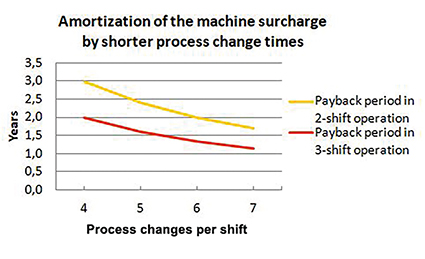
Summary
A more detailed analysis reveals that machine A and machine B can only be compared at first glance. The decisive factor in an investment is not just the total investment and the achievable quality, but also the overall performance.
In this context, in addition to qualitative aspects, the process variability of the machine system is essential, especially with frequent process changes. The reason is simple: fast process changeovers and set-up times have a decisive influence on the total operating costs. As orders become smaller, this influence becomes ever stronger. Especially in the case of an order structure with many changes, it is therefore worth investing in a highly automated, flexible label printing system despite the higher initial costs. The seemingly more expensive machine proves to be the more economical solution under these general conditions.




